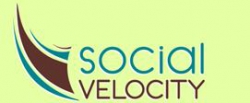Feb
26
2016
An Interview with Sean Thomas-Breitfeld

This interview was conducted by Nell Edgington and reposted from Social Velocity. To read the full interview, click here.
Nell: What is the role of leadership in movement and network building? How do you balance the need for organic and distributed power with the need for someone (or multiple someones) to provide vision and marshal resources?
Sean: I think it’s important to start by teasing apart the concepts of movements and networks, or any other organizational structure/formation that might be the “cool new thing” in the nonprofit sector at any point in time.
I’m pretty traditional (admittedly even rigid) when it comes to what makes a movement. For me, movements are bigger than any organization, coalition, network or campaign could ever hope to direct or contain. That’s not to say that organizations – and networks of organizations – don’t have a role in supporting movements, but nowadays it seems like everyone’s talking about movements, but too often in a way that’s disconnected from the kind of fundamental social change that feminist, anti-war, civil rights movement leaders did a generation ago.
If an organization is trying to build a campaign or network to support its mission, generate a ton of subscribers and followers, and raise their profile as a “legitimate” advocate on an issue, that’s great. But that’s a campaign. Not a movement.
I spent a chunk of my career working on campaigns, and maybe it’s because I was trained by organizers, but we were clear about the difference between our measurable campaign deliverables (whether a policy was won or lost, how many people turned out for an action or march, etc.) and the more intangible aspiration that our organizing would spark some movement energy on the ground.
Part of the reason that my organization holds up leadership as a key focus area for our research is that we recognize that organizations, networks, movements need strong leaders and also need strong collective leadership. So when we think about the balancing act, it’s not that distributed power and vision / resources are at opposite ends of a scale. In fact, from a movement perspective, distributed leadership actually enhances the movement’s vision and brings more resources to bear on the fights the movement takes on. This is not to say that there aren’t struggles over leadership and between individual leaders/personalities… all of our organizations are made up of human beings interacting with each other, so conflict is going to be inevitable. The challenge is how to make those tensions and conflicts generative.
To read the full interview, click here.
